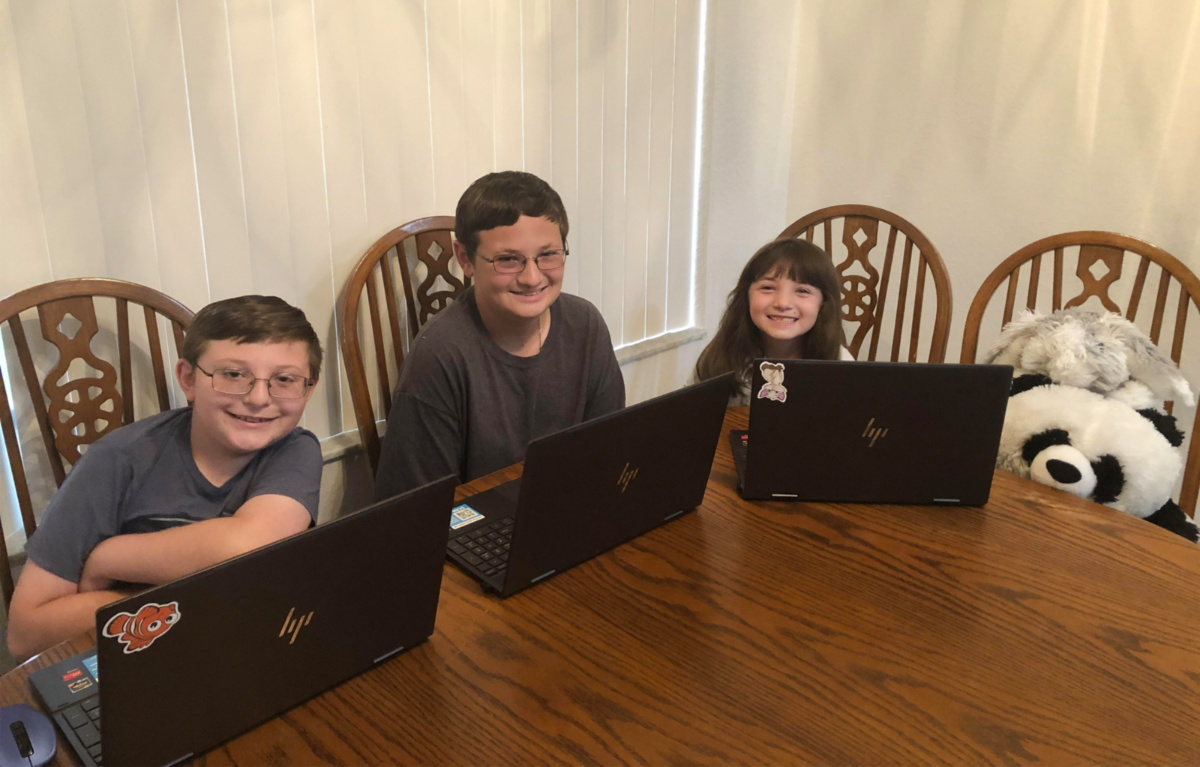
YONAT SHIMRON, of Religion News Service, reports on the move of some US Catholic schools to permanent online learning…
Catholic schools across the country worked hard to keep their doors open this past academic year, even as many public schools remained closed.
But now, with the coronavirus pandemic in retreat and nearly all schools returning to in-person classes this fall, a dozen Catholic dioceses across the US are launching permanent online schools.

PICTURE: Giovanni Gagliardi/Unsplash/Creative Commons
The growth of online learning may be among the more unexpected of changes to come out of the pandemic. While most students will return to brick and mortar classrooms, some are never going back. A March NPR/Ipsos poll showed nearly a third of US parents said they were likely to stick with remote learning indefinitely.
Now a new range of options – including religious schools – is catering to them.
The growth of online learning may be among the more unexpected of changes to come out of the pandemic. While most students will return to brick and mortar classrooms, some are never going back. A March NPR/Ipsos poll showed nearly a third of US parents said they were likely to stick with remote learning indefinitely.
Catholic dioceses such as the Diocese of Raleigh, which covers the eastern half of North Carolina, are experimenting with the model.
In addition to its 31 physical schools, the diocese will start a permanent online school for grades K-8 by partnering with Catholic Virtual, an accredited for-profit organisation started 10 years ago to help expand and enrich Catholic school curriculum.
Classes will be taught by Catholic teachers from across the country in mostly prerecorded lectures with online curriculum materials and discussion boards. Students may log on at their convenience any time of day or night. Students don’t even need a laptop; they can use a tablet.
“This is one way we can be adaptive in serving all of our students’ needs,” said Lytia Reese, school superintendent for the Diocese of Raleigh, which will collect tuition [$US6,050 a year for elementary grades] and undertake other administrative tasks for the online school. “There are some students who thrive in a virtual environment so we wanted to make that option available to students.”
The experimentation with online schools may be a product of necessity.
Catholic schools saw a 6.4 per cent decline in enrollment at the start of the 2020-2021 school year, the largest single-year decline in 50 years, according to the National Catholic Educational Association. Catholic elementary schools bore the brunt of the decline.
There are about 1.6 million Catholic school students in the US today, compared with more than five million in the 1960s. The Catholic share of the US population is also declining. Catholics make up 20 per cent of the US population, according to a 2019 Pew Research Center study, down from 24 per cent in 2007.
At the same time, there is a proliferation of educational options – including charter schools and home-schooling networks – that may be attracting students who once would have gone to Catholic schools.
Kevin Fields’ two children used to attend St Mary Magdalene Catholic School in Apex, North Carolina. But this past year Fields liked the flexibility of online learning, which allowed him to better coordinate additional home tutoring for both of his children, who have special learning needs.
“The final decision to keep them remote is that we can supplement their education with tutoring and give them a more flexible schedule to get the help they need,” he said.
In the fall, Vanessa, 14, and Alex, 10, will attend the new Diocese of Raleigh Virtual School. Fields and his wife, who run a small book business, both work from home.
Robert Birdsell, president of Catholic Virtual, said the company has seen an uptick in interest.
It has recently partnered with 10 dioceses for new online schools beginning this fall. Another 15 are discussing the idea. Tuition is set by the diocese and is typically comparable to tuition at in-person Catholic schools.
“The pandemic has accelerated the acceptance and embrace of online learning,” Birdsell said. “It’s not right for everyone. But I believe choice is the best outcome and parents should be able to choose.”
Catholic Virtual started as a way to enhance the curriculum of smaller Catholic schools by providing advanced placement and other classes to Catholic schools that don’t offer a full menu of in-person course options. (The Jesuit high school network has a similar online service called Arrupe Virtual.)
Most students at Catholic Virtual schools live within the partnering diocese’s geographic boundaries, but a minority of students may be from outside the region.
Birdsell said Catholic Virtual doesn’t want to compete with brick and mortar schools so it is partnering with dioceses instead.
“Dioceses and schools know their communities and their needs,” Birdsell said. “We can bring the technology, the platform, the instructional design that they don’t have.”

The Digiuseppi siblings Charlie, 11, from left, Anthony 14, and Abagail, eight; attend school virtually from their home in Fort Pierce, Florida. PICTURE: Courtesy of Lola Digiuseppi
The Diocese of Brooklyn opened the St Thomas Aquinas Distance Learning School in 2020 with some 2,000 K-8 students – most exiled from brick and mortar schools because of the pandemic.
This fall, a smaller school with 200-300 students will become a permanent online academy partnering with Catholic Virtual.
Ted Havelka, director for enrollment management and financial assistance for the Brooklyn Diocese’s K-8 schools, said he hopes the school might attract others who are not ready to go back to in-person classes in the city of New York.
“I’m optimistic this will bring new families into Catholic education,” said Havelka. “We have an outreach campaign to be that online solution for them that’s not being provided elsewhere, and with Catholic values, with Catholic teachings.”
Lola Digiuseppi, a mother from Fort Pierce, Florida, has enrolled all three of her children in a Catholic Virtual school. To her, the proximity to her children is worth it.
“You have the freedom to spend more time with your children,” she said. “You’re not rushing to get them dressed and make lunches. You have more quality time with your family.”
The family has not gone to church since the pandemic started. But she feels confident the kids are still being educated in the faith through their school. The convenience of it has her sold, she said. “I wish I had it growing up.”





